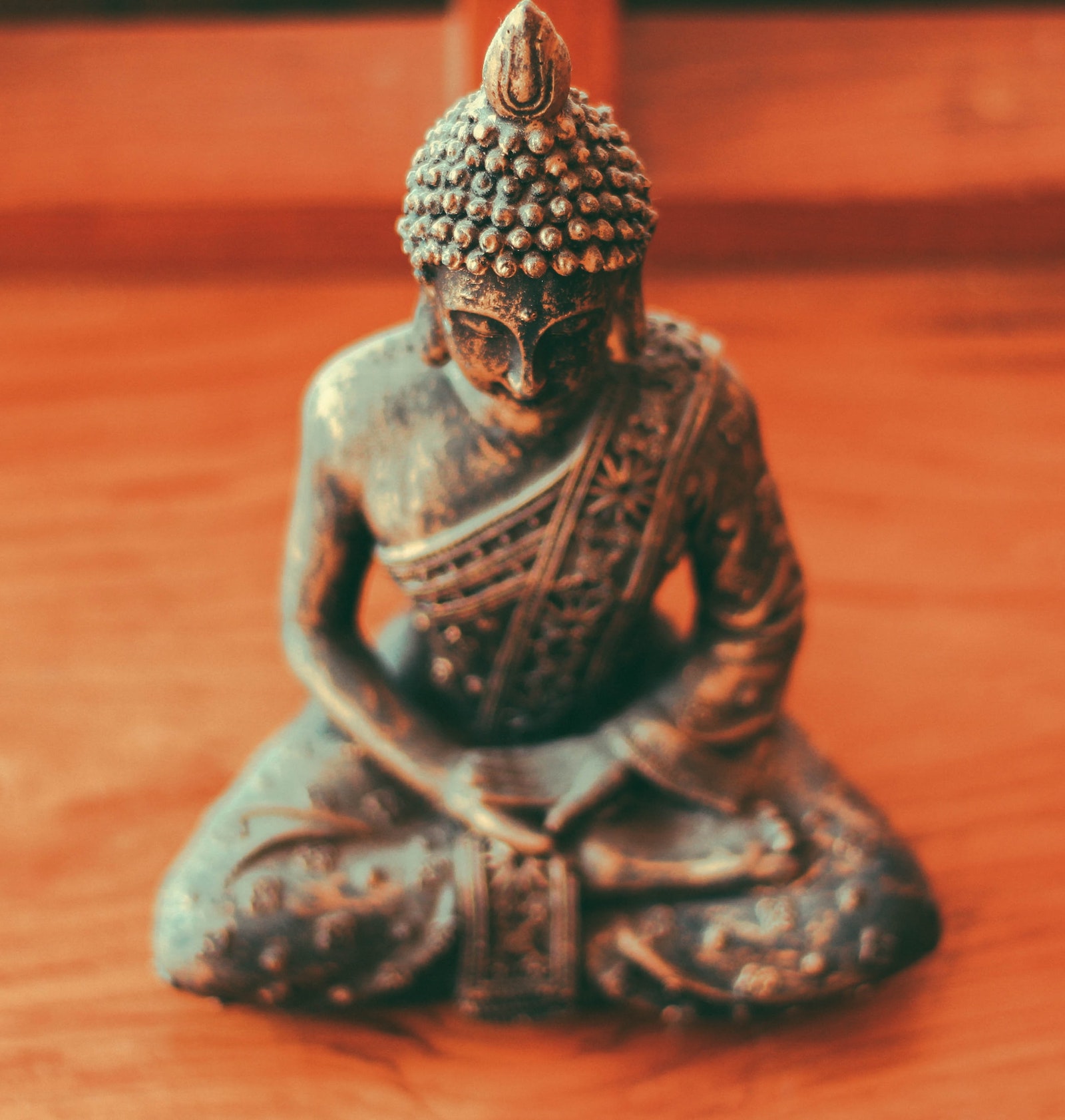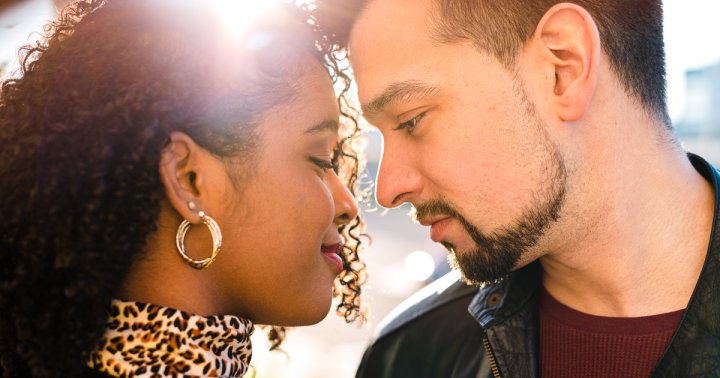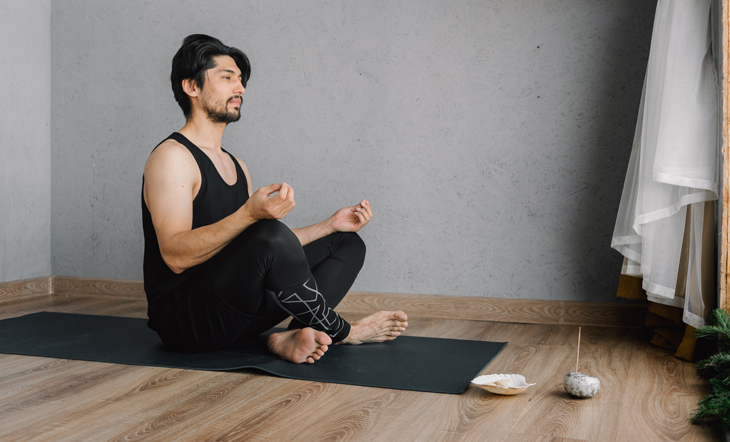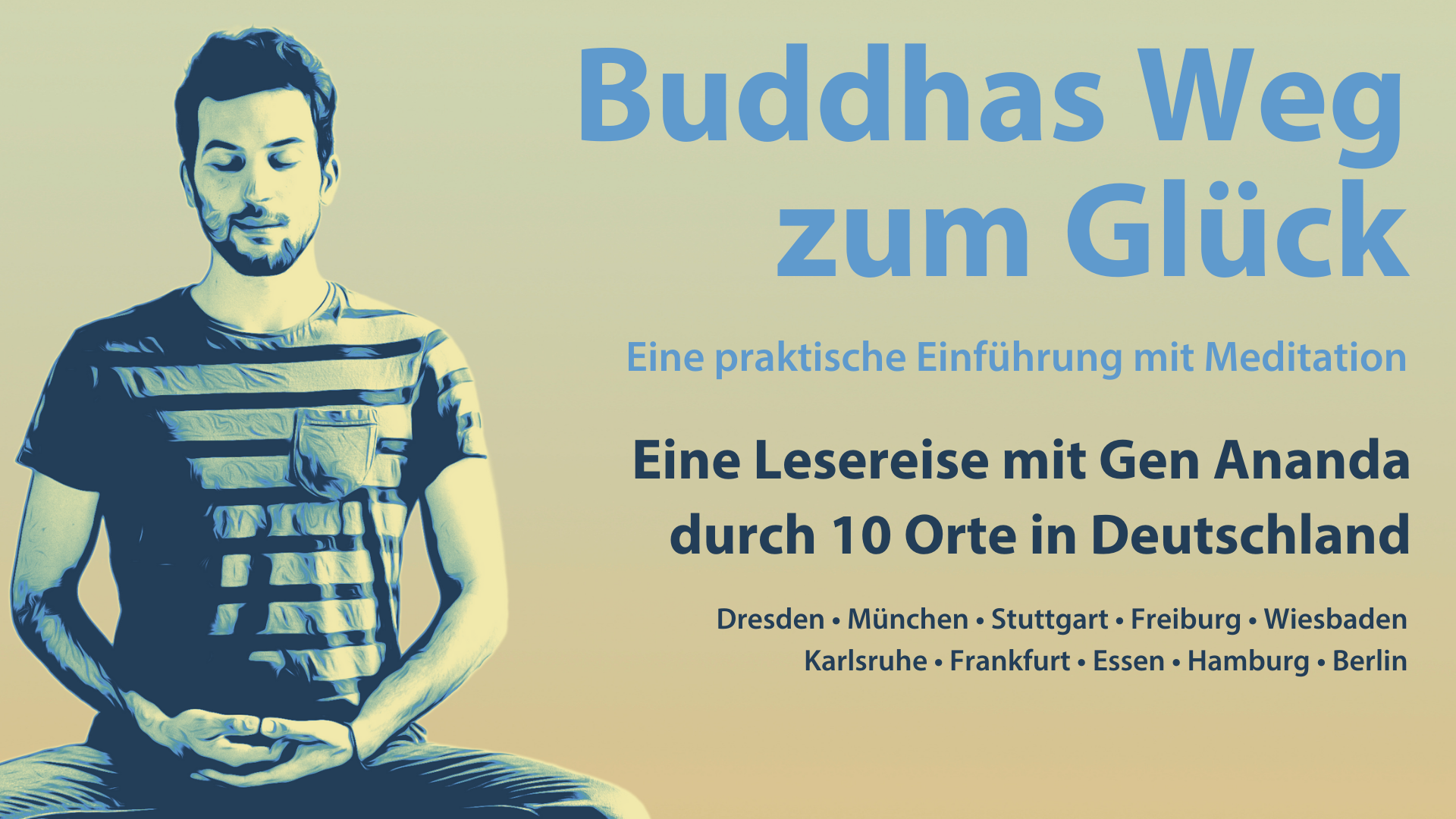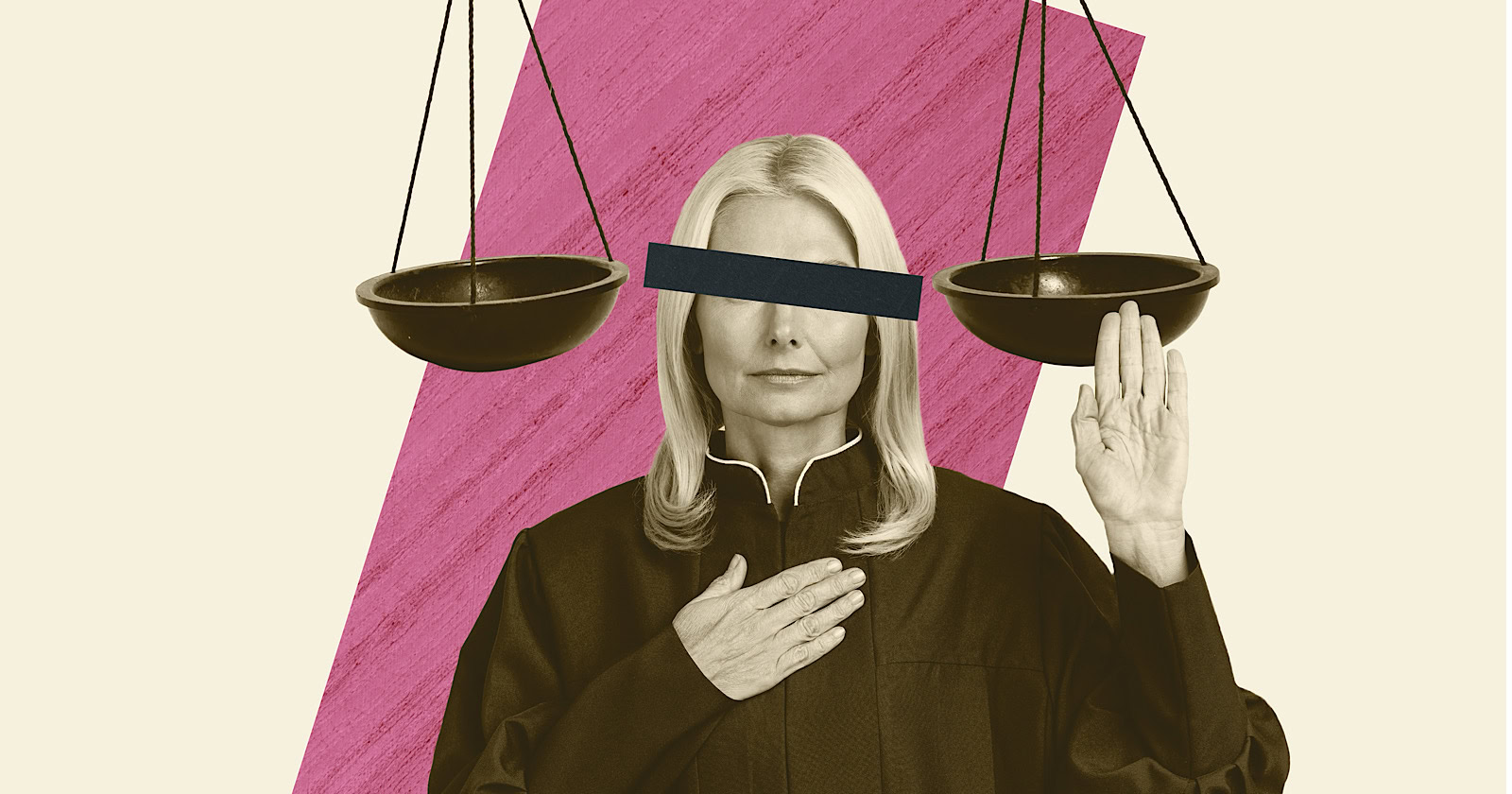How Do We Cultivate Dharma Teachers?
Ven. Pannavati, Rev. Blayne Higa, Rev. Myokei Caine-Barrett, and Kakumyo Lowe-Charde explore the complexities of guiding others toward leadership roles. The post How Do We Cultivate Dharma Teachers? appeared first on Lions Roar.
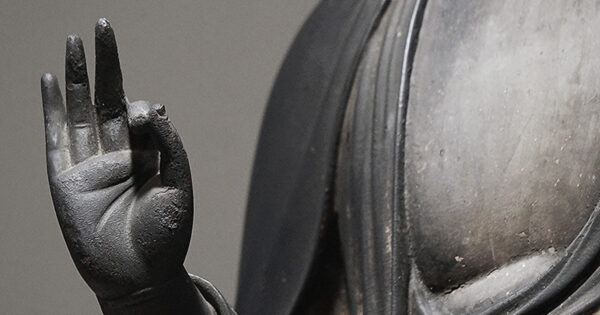
How, in 2022, are Buddhist practitioners being trained as teachers? Ven. Pannavati, Rev. Blayne Higa, Rev. Myokei Caine-Barrett, and Kakumyo Lowe-Charde explore the complexities of guiding others toward leadership roles.
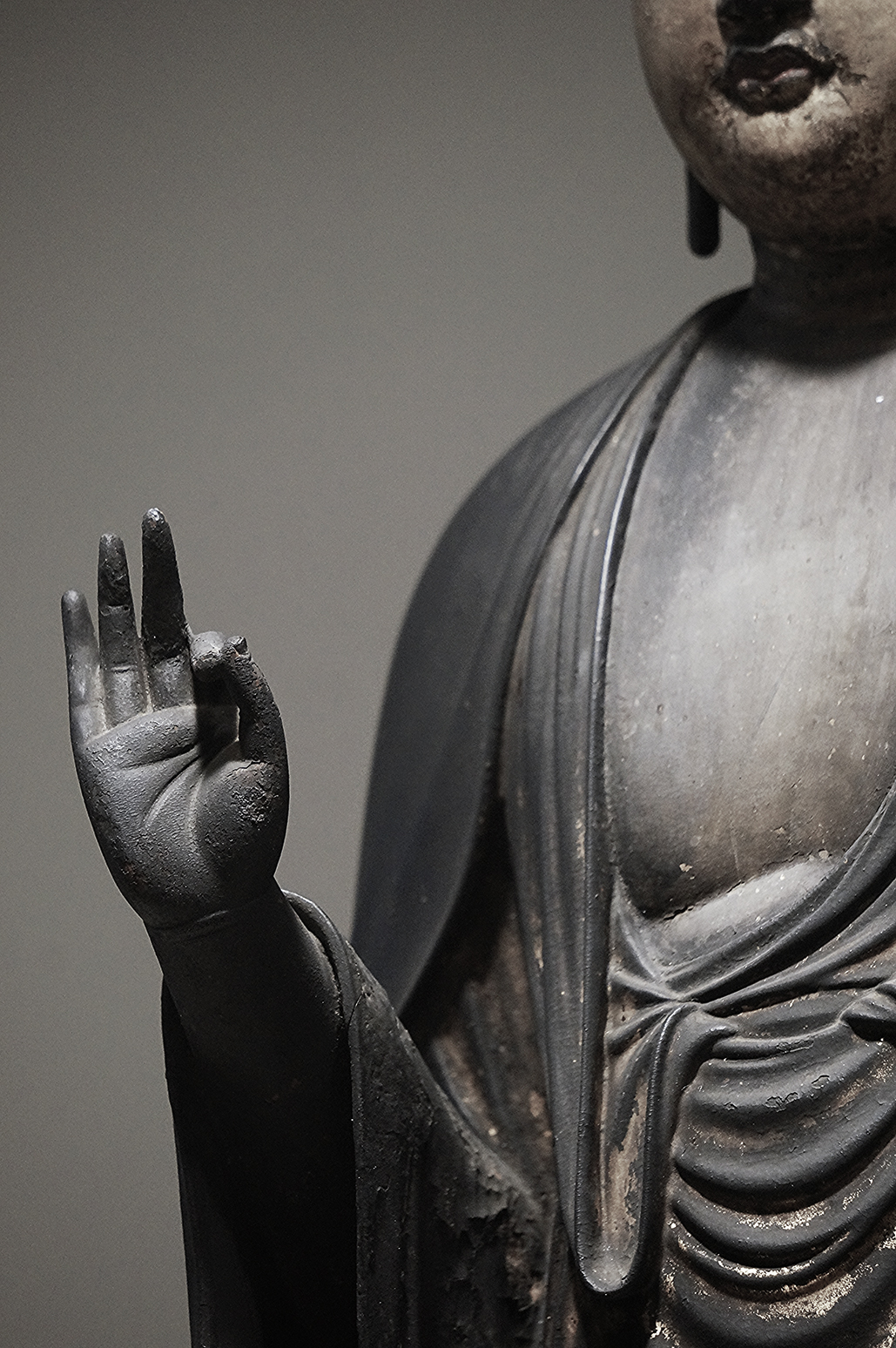
Photo by LaTur / Flickr
It is said that after Siddhartha Gautama realized enlightenment, his first impulse was to teach others how to achieve liberation. But after contemplating his initial enthusiasm for sharing what he had learned and who he had become, he became burdened with grave doubts about humanity’s ability to receive and understand his dharma. As the story goes, a heavenly deity reached out to the Buddha to inform him that some people were capable of learning what he wanted to teach, so the Buddha embarked on a teaching ministry. As he taught from grove to grove, his student base grew, giving rise to the need for additional dharma teachers. In the centuries since, across countries and eventually continents, Buddhist traditions have continued to grapple with, and in some cases define themselves by, questions around what it means to teach the dharma: who is qualified to teach, what is a teacher, and how does someone become one? The answers continue to vary, from school to school and community to community.
Meanwhile, in just the last few years, multiple programs have been developed to train mindfulness teachers. From Jon Kabat-Zin’s Mindfulness-Based Stress Reduction (MBSR) to Ellie Burrows Gluck and MNDFL, to the Mindfulness Meditation Teacher Certification program developed by Tara Brach and Jack Kornfield, opportunities are increasing to become leaders and teachers in the mindfulness world, and the pathways to those certifications are clear. Many Buddhist teachers have expressed concerns about the secularizing of mindfulness and its place in the dharma, but the question is, are these training programs producing effective “dharmic” leaders? If so, why? And if not, why not?
I was the founding director of an interreligious chaplaincy program at a seminary. One thing that surprised me was that some of our seminarians did not belong to a religious tradition, nor to a religious or spiritual community. This creates a barrier, because for chaplains, the fundamental empowerment to do that work is conferred not by the school granting the degree, but rather by the religious body and community they are a part of. When students learned that their degree would not confer professional chaplain status on them, they were surprised and afraid they would be unable to fulfill their career aspiration unless they joined a religious or spiritual community that had some form of lay or clergy leadership. Some had no idea where to turn. They had no knowledge of a group of people who shared their beliefs, worldviews, cosmologies, rituals, doctrines, or dogmas. I believe the impulse to gain competence and status through higher education permeates our culture of privileging intellectual attainments. We have come to believe, many having gone deeply into financial debt, that formal education alone prepares and makes good leaders. Does it?
Reflecting on my own leadership training journey and the complexity I’ve witnessed of navigating these different systems and expectations, I wanted to ask longtime Buddhist teachers from different traditions about their thoughts on teacher–leader cultivation. In this panel discussion, four Buddhist leaders—all of them also teacher trainers—share their own journeys and consider some of the issues around the cultivation of future leaders, from the challenges of the teaching role itself, to what they look for in their students, to the powerful role of humility.
—Pamela Ayo Yetunde, Associate editor
Pamela Ayo Yetunde: In your tradition, what is leadership? What does it look like?
Myokei Caine-Barrett: One thing I think about is the role of being the example, the one who is first to try to follow the teachings and to live up to the bodhisattva vows we recite. I think, when you do that, you don’t have to actually lead. People will follow simply because they see the benefit that occurs in your life from practicing the teachings.
Ven. Pannavati: My master would call that “no fake talk.”
Blayne Higa: In our tradition, we have a phrase, jishin kyo ninshin, which means to secure one’s own entrusting heart to the dharma and guiding others to do the same. We, as priests of the tradition, first need to secure our own spiritual center, using the dharma as our guide and guiding others to that same deep entrusting to the dharma, to the Buddha. We are people who come alongside others to face the future together, to face whatever challenges are before us together.
Part of what the teacher is using to determine whether someone’s ready to become a teacher is, is it needed? Is the community seeing them as a support in the dharma in that way? —Kakumyo Lowe-Charde
Kakumyo Lowe-Charde: The way we practice with leadership is that we try to ensure that everyone is a leader. Leadership is letting the deep significance of the situation matter to us, and investing willingness and effort into it. Being a dharma teacher implies that we’ve cultivated skill in specifically using the dharma to express that effort.
Pamela Ayo Yetunde: Some people might be surprised to hear that none of you said a good leader is someone who guides others toward themselves. How can you be a good leader, but also not center yourself as the guide?
Blayne Higa: The dharma is our guide. Ultimately, we are not the ones who lead. It’s the dharma itself that we are helping people to encounter. That is the true focal point of our communities.
Myokei Caine-Barrett: I think that’s one of the hardest things one has to do, to not center self, because it’s easy to get caught up in “I’m the authority.” But if we really understand our Buddhist practice, we are all essentially one; we’re all connected. The buddha in me is the same as the buddha in you. The dharma we share is the same. That approach is more gratifying. I don’t want to use the word self-serving, but it serves all of us that we can see each other in the mirror of our own lives.
As we’re working together, I don’t have to be perfect or wiser or anything like that. I can be just a good friend, whatever a person needs. If I’m doing my practice correctly, my life responds. It’s not really me. It’s more that. The teachings of the Buddha, the dharma, are able to flow through my life and connect with somebody else’s life. We had one example we used to use that we were all like dirty potatoes in a barrel, and you shake them up so you can knock all the dirt off. When we practice together, we start to clean up each other’s lives.
Pamela Ayo Yetunde: As dharma leaders who are decentering yourselves, how are you able to help the sangha when they get into a crabs-in-the-barrel dynamic?
Blayne Higa: I think it’s helping people within community to, instead of facing each other, face the challenges together. We are together facing the problem, not against each other. There’s this idea of mutuality within sangha. There is self-benefit, benefiting others together, and mutuality. That’s the hardest thing to do.
Myokei Caine-Barrett: We call that jigyo keta—the understanding that when you practice for yourself, you are always also practicing for others, and that whatever you do for yourself in turn is a benefit to others. So, you won’t go out and act inappropriately within the sangha because you’re practicing for them as well as yourself.
Ven. Pannavati: The other side of that is we say that the faults of others are my faults. Either way, you go with that, you hold the container. If a person’s acting out, you take that onto yourself. If you are acting out, you hold that with yourself. That leaves you nowhere to go, and that’s how we do our work: it starts with me, it ends with me. And if everybody’s practicing that, it becomes a beautiful container. Everything gets resolved very quickly. You don’t let the sun set on whatever’s going on. You see the beauty in quickly resolving issues. You delight in every day being a new day. And the song becomes gorgeous. There’s no ego shifting. There is none of that. The people around you notice that—they may not know what it is, but they are drawn to it.
Pamela Ayo Yetunde: How did you became leaders? Who is qualified to be a dharma teacher in your tradition?
Blayne Higa: We have a pretty formal process in our tradition of ordination, receiving tokudo, which is the initial ordination as a priest, and then getting kyoshi certification, which is becoming a dharma teacher or being able to run your own temple. All of this—who is authorized to be a dharma teacher, who authorized to be a priest—is all regulated and prescribed by our mother temple in Japan.
To teach, you have to have a real calling, because it’s a tremendous sacrifice in so many ways. It’s also a tremendous gift—one well worth carrying. —Myokei Caine-Barrett
Myokei Caine-Barrett: We have pretty much the same process, I believe. And we are working on having it based here in the United States, also, so we can have it done in English. As to who is qualified, I think that’s pretty tough, because a lot of it, for us, is based on that personal, very intimate relationship between teacher and student. It’s an extremely intimate relationship in the sense that you can’t really have secrets. You have to be open to each other and be able to accept the criticism and the teaching and the madness of your teacher. At times, I can remember really disliking my teacher—thinking, I hate this guy—but I also had the joy of understanding when I finally reached ordination that there was a line I had crossed. It was like night and day because, all of a sudden, I was a priest. After years and years, those people who taught me had accepted that, yes, I’d gone through the steps. And so, there was never any feeling of being outside. I was welcomed into the fold of the priesthood immediately, which was very powerful. And also, at that moment, understanding what a heavy responsibility it was. I wasn’t playing anymore.
Ven. Pannavati: In Theravada, there were two years of being a novice, then five years before you were ordained as a bhikkhuni. In Mahayana, you were an outside-the-door disciple, then, for a few years, an inside-the-door disciple. It’s something that’s more caught than taught. I think the greatest hindrance, particularly in the West, is around the idea of making a business out of having students, because mostly in the East, you only have as many disciples as you can personally train. Even when you have a monastery, one teacher has two or three or five or ten disciples; even if there are hundreds in a temple, there may be an overseeing abbot, but he’s not personally developing and working with all those novices and all those monks and/or nuns. They have mentors and they have teachers. Here, it’s a little bit different, in terms of enrollment and how they’re paying for their tutelage. So there is definitely trouble in paradise. That’s the greatest shortcoming I see in all of this.
Kakumyo Lowe-Charde: There are external aspects, these different steps that are recognized: tokudo is ordination; denbo, for us, is transmission. And those are very personal, between a teacher and a student. But part of what I would say the teacher is using to determine whether someone’s ready to become a teacher is, is it needed? Is the community seeing them as a support in the dharma in that way? I want to be receiving that input from lots of different channels. I don’t want to just trust my perspective in determining whether someone is ready for this. I want to be getting that message loud and clear from my own gut, but also from others, from the people around that person. I want that to be really cohesive, that sense that this person needs to be teaching the dharma, that we want to receive the dharma from this person. In that sense, the sangha makes those decisions. I think one of our confusions in the West is often that we imagine there is a spiritual teacher, independently. I don’t think a teacher exists without a sangha. So there has to be that resonance. There has to be that fit, that trust, for teaching to happen, for transformation to be aided in that way.
Part of my role is reminding myself to always be at the level of my members, of the people I serve and care for. I may wear the robes, but I’m not above them. —Blayne Higa
Blayne Higa: We also, in our tradition, have rigorous education requirements: going to seminary, taking graduate level classes in Buddhism, in pastoral care, in dharma learning, as part of our requirements for becoming a full minister, a full priest.
Myokei Caine-Barrett: We do as well. And we are tested on our knowledge and ability to chant. And they’re very tough. There are lots of other teachers that are part of that. We’ve had teachers come from all over the world to help train, and also to assess. So, you’re not just operating under the whim of one person. There’s a whole body of folks looking at you and making sure the fit is appropriate.
Pamela Ayo Yetunde: That sounds so wise. I’m thinking about people who have been longtime, dedicated practitioners but who are introverted, or who tend toward shyness, or who lack confidence. How can they know that their desire, that impulse to maybe step into leadership, is valid if they’ve been so quiet for so long?
Myokei Caine-Barrett: Being an introvert doesn’t disqualify anyone. I’m an introvert. But to do this, you have to have a real calling, because it’s a tremendous sacrifice in so many ways. It’s also a tremendous gift—one well worth carrying. You may not know how you are to serve, but if you are called to service, it’s something you can’t deny. It’s going to keep coming up. Instead of a little flick on the ear or pinch on your nose or pull of your hair, you’ll get knocked upside the head by a two-by-four. This is quit-playing-around time.
Pamela Ayo Yetunde: I wonder if any of you have encountered the thinking that if someone says they want to be a dharma teacher, then the teacher should be suspicious of that. What do you think about that?
Kakumyo Lowe-Charde: I get nervous if I have someone who is talking about wanting to present the dharma. Yeah, that’s a red flag. It’s not a stop sign—it’s not the end—but it’s something to be wary of. I certainly didn’t come into this wanting to be a dharma teacher. So I trust that hesitancy of, is there anything else that could happen? Is there any other way this could play out? And when there’s no escape, then that’s something trustworthy.
Myokei Caine-Barrett: Isn’t there a tradition also that you have to knock at the door three times before you can gain admission? We don’t quite have that, but my teacher made sure to give us the worst week of our lives to make sure we knew what we were getting into. It was the most horrible week I’d ever experienced, but I was not dissuaded.
Ven. Pannavati: You can’t have dharma teacher programs if you’re going be suspicious of the people who want to enroll in the dharma teacher programs. My Buddhist master says that only a buddha can teach the dharma. The rest of us, because language is in the conditional reality, the minute we start teaching, if we are not a buddha, then we’ve already reduced whatever it is we’re going to say out of the realm of what can be perfectly articulated. We’ve already messed it up. And I’m very much aware of that now, maybe much more than I was ten or twenty years ago. I have a great respect for, and take better care with, the words I utter and the truthfulness of everything I articulate, to make sure that no harm is done.
Pamela Ayo Yetunde: What you just offered—anyone who’s thinking about dharma leadership in the West should deeply consider the cultural humility that is required. To be on the seat and know that what you’re saying is insufficient on one level—that’s beautiful.
Blayne Higa: It’s to recognize our own human limitations, but also to remember leadership is about service. Leadership is also not about being perfect. It’s about continual learning. When we are ordained as priests, we enter the way. This is the beginning of a lifelong journey of learning and deepening our understanding of self, of the dharma. That never ends. We are always a student on this path.
Pamela Ayo Yetunde: When a dharma teacher has been positioned by the sangha as a focal point within the community, they will be the recipient of unconscious projections. How do you remember to be humble? What’s your process to keep it real?
Ven. Pannavati: Publicly confessing all the time, whenever I mess up. It’s showing people how to do it and that there’s no harm, no foul, so they can say, “I messed up. I said the wrong thing. I did the wrong thing.” It’s showing how easy it is to do that, so you don’t become hardened or feel like you can’t do that. You stay soft, able to admit a fault, showing how you can overlook a slight, you can tolerate a rebuke. It’s beautiful to not become hardened, all of us continually correcting and perfecting our three karmas.
Myokei Caine-Barrett: It’s really showing people how the dharma guides you and strengthens the very core of your life. I’ve been volunteering in the Texas criminal justice system for the past nineteen years. I go in to teach dharma in the prison. One of the guys in prison said to us one time that, because of our practice, we smelled like freedom, like liberation. And I took that to mean that sense of not being bound by this convention of the body. These were a bunch of white supremacists who were transformed because of the difficulty we had to work on, of not being offended by all these white guys, and what they had to work on, of not being offended by these women of color, trying to work with that and to see that. We could see that resolve without even talking about that particular dynamic.
Pamela Ayo Yetunde: Unfortunately, when people hear about dharma teachers, oftentimes they hear about scandals. They don’t hear about the hundreds of dharma teachers who have not engaged in a scandal. They don’t hear about the hours and hours of work you all do, listening to others, serving others, guiding them back to their hearts. They don’t hear about the years of study. That doesn’t make the news. The goodness is not what makes the news. I’m wondering if any of you ever found yourself losing your way, away from the ground of what is right as a teacher, and finding your way back. If so, can you say something about that journey?
Kakumyo Lowe-Charde: There was a time when I was basically the administrator of the temple, and we were going through a really dicey period. My practice really suffered for several years, and I knew that it was happening, but I just decided to hope it’s worth it. So I stagnated internally, and waited, and eventually I made it through the worst of it. And what shifted for me, what allowed me to re-center and really start practicing again, was the driving question of, what’s going to make this work? What’s going to make this function? What’s going to really help people? The answer I found was that what I can offer is who I am on a moment-to-moment basis. Not the structure, not the situation, not the conditions, but really the who. Prioritizing that and prioritizing my state of mind was a real reset. I tried to talk myself into that for several years and it didn’t happen; finally, it happened organically, and there was a reentering.
Blayne Higa: We’re always being tested. Life is a series of challenges and opportunities. So we always have to remind ourselves to be grounded in the dharma, grounded in our practice, grounded in the very soil of our teachings to keep us firm, to keep us steady, to be able to see and to act with clarity and compassion. We’re not going to do it perfectly all the time—that’s just how it is. But we can remember that we are responsible. We’re responsible for our actions, for this community, for these lives, these fellow travelers. That’s a very powerful reminder, I think, for every person in leadership, to remind ourselves that this is not about us. This is about everybody we serve that we care for.
Myokei Caine-Barrett: It’s understanding that all the difficulties and challenges we face are for our benefit. Try to remember, when stuff happens, to ask, what’s the good here? What’s the benefit for me here?
Pamela Ayo Yetunde: The attempt to not see yourself as the focal point or as authority figures does not change the fact that you are that for a lot of people. Is there a way that a dharma teacher can let the community know that they are permitted to challenge you or bring questions to you or disagree with you?
Myokei Caine-Barrett: I guess I’m lucky because everybody disagrees with me a lot. I don’t necessarily do dharma talks. We have dialogue, and I may share a writing of our teacher or writing from the sutras and talk about it. How do you apply it? What does it mean for your daily life? We just go around and share. I’ve been doing it that way for a long time, rather than giving this lecture about a particular point, and that suits me. I’ve had people come into my space and want to prostrate in front of me—that’s in their tradition, that’s what they do—and for me, it’s like, please don’t do that. I’m not just not into that. Don’t do that. Just shake my hand, give me a hug, whatever. We’re just two folks here talking about the dharma.
Blayne Higa: In the Shin tradition, we are not separate. We are not apart from our members. I may wear the robes, but still, we are all equally embraced by the compassion and the wisdom of Amida Buddha as fellow travelers. In our tradition, there’s a term called ondobo ondogyo, or “fellow traveler,” and it applies to all of us on this path together. Part of my role is reminding myself to always be at the level of my members, of the people I serve and care for. I’m not above them. Even though there is a responsibility, and there is a certain specialness imbued by this, ultimately, we are not special, we are not different.
Myokei Caine-Barrett: I believe in Blayne’s tradition, a statue is used, Mikaeri no Amida. That’s such a beautiful statue in its meaning: leave no one behind.
Blayne Higa: Yeah, it’s a beautiful statue of Amida Buddha, who normally is facing forward, but this one is turning toward the back. The story is that one of the monks was falling behind in a procession, and Amida turned and said, “Come along.” There is this idea that each of us is never left behind. We’re never alone. Sangha is to be in community together. The dharma is relational and is expressed through our living our lives.
Pamela Ayo Yetunde: Are there any concerns you have about how teachers in the West are trained today?
Ven. Pannavati: I have an issue with the way dharma leaders are being trained in the West. My whole purpose for entering into the dharma is that I’m seeking liberation from samsara, from the cycle of birth and death. So, I’m looking for that which is neither arising nor ceasing, because that’s what the Buddha came to point people to. That’s the perspective I’m coming from. And I feel that the teaching of Western psychology has trumped, and virtually stamped out, what the Buddha came to teach. Some of it is still there, but it has basically caused us to move quickly into a buddhadharma-ending age. We have this secular dharma, but I feel it’s certainly not the buddhadharma. It may do a lot of good things for us in the West. That’s fine. But I’m dedicated to awakening, to seeking my own enlightenment, and to helping people who are also looking for the way out of samsara.
Think of it this way: there is a conditional law of the universe, cause and effect, which we could liken to the law of gravity. I know if I go up to the second floor and jump out, the law of gravity says, I’m going to go down. That’s the absolute, cause and effect. But there’s a law that supersedes that. That’s the law of aerodynamics, which says that if I go up to the second floor and I implement the law of aerodynamics—all things being in the right order, the right sequence, with the right conditions—I could actually go up, soar. But I have to have the right mechanics. Now, if I were to go up there with the right mechanics, get the right speed and lift, then I could take off and I would not go down. I could break free and at a certain point be completely free of its gravitational pull. That’s how crucial this is. I can’t just do mindfulness. That might give me the right trajectory, but if I don’t have the right propulsion and so on, I’m still going to go down. I want people to have the aerodynamics so they won’t go down. For that, they have to have the six paramitas. They have to have the three purifying precepts functional. They’ve got to have all of this and more, otherwise they’re not going to make it. And that’s why I’m so critical, because people are going to go up to that second floor thinking they have something, and they’re going to crash and burn—and it will be our fault, because we either did not know the truth ourselves, or we were afraid to tell the truth.
Myokei Caine-Barrett: I also have concerns, especially in the mindfulness tradition, because of the number of people I’ve run into who have not done their own work. These people vomit their stuff all over everybody they run into and then call it the dharma. I think a lot of people don’t even get that Buddhism is a major world religion. They always say, well, it’s just a philosophy or it’s just a practice. No, there’s a whole body of work that is the teachings. There’s a reason for the teachings. And I hear people just dismiss the teachings and say, well, all I have to do is meditate and everything’s going to be fine. No. It’s so much more than that. That’s my biggest problem, that it’s become diminished. We have a lot of work to do to bring people to a realization that it’s time to work to build up the dharma, to keep it going and not diminish it.
Kakumyo Lowe-Charde: A concern of mine is that teachers need community, the essentiality of living the dharma with people and doing it in a context in which people see us as whole people. If someone is isolated, if they don’t have dharma peers around them, then it’s too easy for them to be elevated in a way that doesn’t allow for that continuous practice of shaking the potato bag. Without that, we get a dharma teacher who is not resilient, who is not stable, who doesn’t have that necessary pliability.
Blayne Higa: We need to bring our whole selves to this. Body, mind, spirit. Everything we are, we bring to the practice, to the way, and to this journey. Buddhism is not just the techniques or the practices of mindfulness or meditation. It’s a full spiritual journey for our entire lives. These are complementary things that need to occur simultaneously. You can’t have just meditation without having an ethical life. You cannot have one of these things without the other, because they’re interdependent. That’s why we have the Buddha, the dharma, the sangha, three treasures working together, supporting our spiritual lives. When we separate these techniques from the heart and the spirit of the tradition, it loses something, because it’s not just self-help. It’s deeper than that. It’s awakening to our true selves. And that’s the hardest thing to do.
Pamela Ayo Yetunde: You all are helping people do the hardest thing to do. You’re helping people, guiding people, accompanying people. You have to sit with your own suffering. You have to sit with the suffering of others. Ideally, you are a predictable presence in the lives of others. You’ve got a relationship. People come to have expectations of you. As leaders, on one level, it may look glamorous. But if you’re really doing the work, it’s hard. Let’s close with one piece of advice for the dedicated practitioner who’s been practicing for years, who is contemplating entering into a leadership role in their sangha. What’s the one piece of advice that you would leave them with?
Blayne Higa: I would share with them to listen. Listen to their deepest self. Listen to the calling voice of the Buddha. Listen to the lives and the members of the sangha. That is a starting point of discernment, of leadership: listening and deeply hearing our own suffering and the suffering of others to know how we can be of service.
Myokei Caine-Barrett: I would say to accept that the path is sometimes difficult and painful, and that never changes, but always expect that you will find joy as you continue to walk.
Kakumyo Lowe-Charde: It called to them by the need that is present. What I would want to show them is that I want to be surprised. I don’t have an image of what it’s supposed to look like. I want to see that calling through them, through that prism.
Ven. Pannavati: I would say cultivate yourself and find the marvelous existence all the buddhas have promised.

 KickT
KickT 








